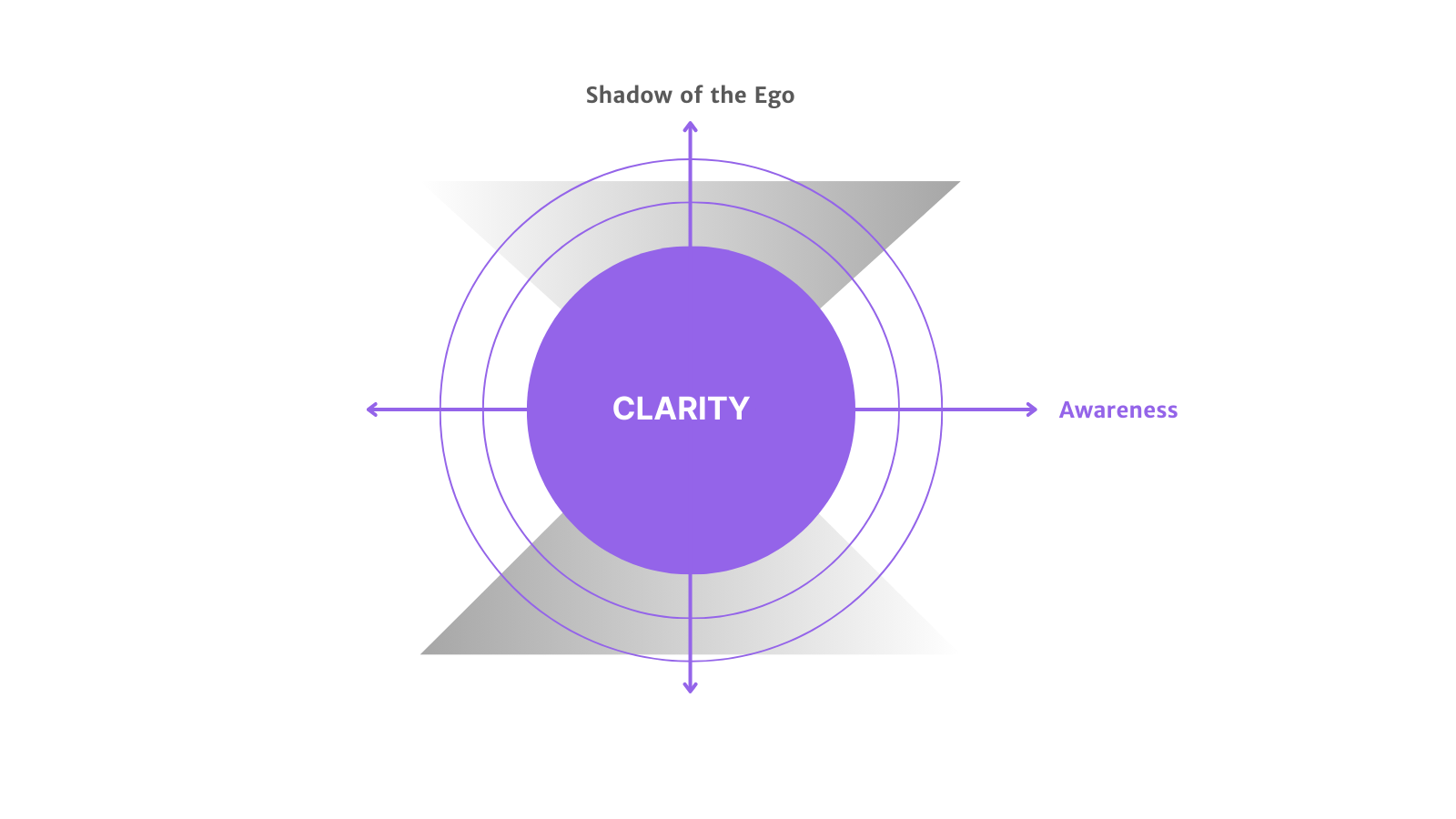Taming the Creative Mind: Why Non-Resistance Is the Key to Focus and Calm for Overwhelmed Entrepreneurs
Discover practical steps to calm an overwhelmed, creative mind using non-resistance. Shift from chaos to clarity, reduce overthinking, and unlock your focus to empower purposeful action. Ideal for entrepreneurs seeking balance and creativity.

For creative entrepreneurs, the mind can feel like an untamed force—constantly racing, shifting, and overflowing with ideas.
Each new thought brings excitement, but also a layer of tension. You try harder, think twice (then twice again), and end up draining precious energy in overthinking. Or worse, you lose opportunity and momentum.
Overthinking is just resistance in a new outfit. It’s a sneaky loop that cranks up anxiety, holds us back from reaching our potential, and stops us from taking purpose-driven action.
What if you could minimize the gap between idea and action?
In this post, we’ll explore non-resistance as a simple yet powerful approach to help you let go of mental strain, boost focus and clarity, and find freedom.
Imagine being able to manage a creative mind that flows effortlessly, embracing calm focus without overthinking.
Picture it: rather than battling a storm of ideas or getting lost in analysis paralysis, you move seamlessly from idea to action. Unhesitating. Clean. Unbroken.
For the creative and neurodivergent thinker, this shift doesn’t just change the game—it redefines it.
Case Study: A Client’s Journey from Overthinking to Flow
Recently, I worked with a client, an entrepreneur who’d spent years pushing himself to “get it right.” He was torn between managing tasks he no longer enjoyed and building the future he envisioned.
He described a rare feeling of clarity that had lasted a few days. He’d been in a state of flow—moving from one action to the next without overthinking or doubting his path. But as soon as familiar worries returned, he found himself spiraling back into resistance and hesitation.
Why do I overthink, he asks?
Me: Because you apply importance to these thoughts. Reduce the importance, and you're loosening your grip on these thoughts.
An entrepreneur is someone who need to rely on themselves.
And being stuck costs a lot.
Me: So, tell me, what’s your approach today?
Client: I think… I’m worried. I try to be positive, find joy, and hope that others support me. But it just feels like I’m hurting my health. I mean, if I’m learning, shouldn’t it feel better? Maybe I should just quit everything, but then I’m left with nothing—back to square one or worse.
Me: Ah, you’re letting the mind’s resistance slip between your ideas and your actions. You know, when we resist life, it wears us down. Let’s take something simple—like taking out the garbage. You can either grumble through it, thinking, “I shouldn’t have to do this,” or decide to bring a sense of joy to the task. It’s the same action, but a different experience.
Client: So, you’re saying I can just decide to enjoy it?
Me: Exactly. You can choose to bring joy into anything. When you do, it dissolves the heaviness around it. When a thought arises, you can ask yourself, “Is this thought a truth that will always be true?” Often, the answer is no—it’s just a worry or fear we’re clinging to.
Client: But sometimes I feel like I don’t even know what to think. It’s like my mind spirals.
Me: Think of it as two paths. One is the path of the ego and its shadows—constantly worried about others’ opinions, creating this gray, heavy energy. And then there’s the path of clarity and consciousness. This is where you radiate without effort, purely, consistently. When you expand consciousness, it dissolves the worries.
Client: So, the ego’s path is the one that clouds everything, and the other path brings light?
Me: We can say that. The ego has some immature parts and these radiate shadows, doubts, worries. Consciousness, however, is like a clear light. The more you align with it, the more your ego’s shadows dissolve. It doesn’t fight; it just is. Stable, powerful in its quiet confidence.
Client: So, that’s the answer—to align with consciousness over ego?
Me: What happens if you do it now? Think of it like the innocence of a child with the wisdom of a sage. When you bring this kind of awareness to each moment, the need for “what will others think?” fades, replaced by a natural radiance from within. This is true mastery.
Client: I can feel it. I'll have to do it several times a day…
The Overthinking Trap for Neurodivergent Creatives
We’re told to “disconnect and unplug,” but what are we reconnecting to?
For many, disconnecting simply makes room for more worry, filling our minds with “what ifs” and “should's.”
The space filled by non-doing is filled with overwhelming thoughts, leading to guilt and shame.
Anything but that. Anything.
This pattern is especially common among neurodivergent and creative entrepreneurs, who often have a heightened sensitivity to potential and possibility.
Imagine standing on the edge of a cliff, where two forces pull at you—one toward the unknown and one to retreat. You’re hyper-aware, feeling the intensity of both. This is what overthinking does: it amplifies both the desire to leap and the fear of falling. What we resist grows. When we give importance to doubts, they expand and start controlling our actions.
The answer? Release the importance you’ve assigned to these thoughts. This release creates space for purposeful, calm action and opens the door to true clarity.
3 Practical Steps to Overcome Procrastination and Manage a Creative Mind with Non-Resistance
- Acknowledge the Urge to Control
Observe your need to control every outcome (think about a thought starting with "they should..."). Often, it’s rooted in fear—of being misunderstood, making mistakes, or not meeting expectations.
Understand the positive intention. It can be protection, control, safety, alignment... For my client, it was about alignment with his goals and core values.
Acknowledging it weakens its hold over you and creates an opening for calm.
- Practice Detached Observation
Expand your awareness without assigning meaning to each thought. Rather than interpreting thoughts or attaching urgency, observe them with the innocence of a child and the wisdom of a sage who has lived a hundred lives. This is creative mind management—allowing ideas without attaching to each one.
For neurodivergent thinkers who naturally produce many ideas, letting some ideas pass without acting on them is crucial. Not every idea demands action.
- Act with Simplicity and Joy
Minimize the time between idea and action.
When faced with a simple task, like responding to a routine email or tidying your workspace, approach it with ease. Skip the hesitation and immerse yourself in the act, releasing judgment. As resistance fades, so does the need for perfection.
The way you start is to start. Often, overthinking and hypercomplicating how to get going is a sabotaging symptom of fear. In reality, you’re resisting moving forward because you’re frightened: of success, of failure, of being ridiculed, of standing out from your peer group.— Robin Sharma
The way you start is to start.
Choose to find joy in the action. When you focus on the act itself, the mental resistance fades.
These steps help calm and direct a creative mind, making it easier to shift from overwhelmed thinking to a state of flow.
The Clarity Axis – Moving from Shadow to Light
Imagine moving from a shadowed path, where doubts cling like fog, to one of clear light, where presence dissolves fear into calm focus.

The ego’s axis is steeped in fear and doubt, casting a shadow of resistance. Opposing it is the clarity axis, guided by presence and inner peace. Non-resistance helps you transition from questioning, “What if I fail?” to affirming, “What feels true for me?”
As you shift onto the clarity axis, fear dissolves, and inner peace becomes your base state.
For atypical entrepreneurs, this shift means embracing focus and clarity without the constant drag of overthinking. This clarity feels grounded, powerful, and surprisingly effortless.
Purpose-Driven Action Through Non-Resistance
Control is often an illusion. Non-resistance isn’t about giving up on your ambitions but freeing energy to act with purpose and alignment.
When the storm of ideas builds, pause. Take a breath, and let go of the urge to control each thought. With non-resistance, you’ll find that focus and calm are always within reach.


